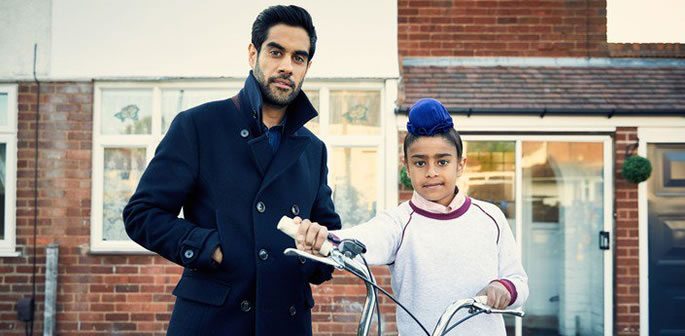"They make me feel like I have won the lottery of life."
The Boy with the Topknot aired on 13th November 2017. Adapted from journalist Sathnam Sanghera’s memoir, it explores the British Asian’s life growing up in Wolverhampton.
The TV drama is enjoying success with both critics and viewers. On social media, it quickly became a trending topic as viewers continued to give positive thoughts on it.
Receiving an array of good reviews, the programme connects well with British Asians. In particular, with how it realistically portrays Desi communities.
It has sparked wide discussions amongst British Asians. Particularly as it explores topics that are commonly seen as ‘taboo’. Including mental health, the stigma of mental illness and inter-racial relationships.
It also looks at how young Desis may have to create a ‘double life’ for themselves. Sathnam grew up in a traditional Punjabi family in Wolverhampton. Yet he embraces freedom with his life in London.
I can totally relate to Sathnam. It’s so hard to see your family’s problems when you’re caught in between two cultures and you’re running away from reality #TheBoyWithTheTopknot
— Parveen (@Parveen_Comms) November 13, 2017
Across Twitter, many British Asians praise its portrayal of Desi life. Giving the perfect balance between humour and compassion, it shows a number of typical scenarios young Asians encounter.
From Sathnam’s mother trying to match him with Punjabi girls to keeping a vodka bottle hidden away in his bedroom, viewers easily relate to it.
Oh dear the nosy Asian aunties who tell on you, we’ve all been there!! ??#TheBoyWithTheTopknot
— Suzi Mann (@SuziMann) November 13, 2017
So much of #TheBoyWithTheTopknot resonated with me as a British Asian. Great to be represented on TV in an honest, sensitive and relevant way @Sathnam.
— Sabina Maharjan (@sabs_m) November 14, 2017
Sathnam’s struggle with his British Asian identity mostly lies in his relationship with colleague Laura. Worried how his mother may feel about him dating a white girl, his struggle slowly turns into an unintended web of lies.
The programme also tackles mental health and the stigma of illness. As Sathnam discovers his father has schizophrenia, it’s even more shocking that his elder siblings know and appear unfazed by it.
When the journalist also realises his sister suffers from the condition, he discovers he previously lived in denial. Which becomes a problem in Desi communities; mental illness isn’t openly talked, hence the many misconceptions.
In a past interview with DESIblitz, Sathnam said his memoir was “a way to make sense of my family history and as a way to move on with my whole life”.
During the programme, the journalist searches for more information by various family members. Through this, one can see how stigma and taboo not only affects young Desis but also older generations.
Twitter users gave praise to Deepti Naval for her excellent portrayal of Sathnam’s mother. A woman who works hard to keep the family united, despite the struggles schizophrenia can bring.
Deepti Naval deserves an award for her superb performance as the mother of #TheBoyWithTheTopknot So does Anupam Kher as his dad.
— Mike Jempson – Ruminator (@MediaWiseMJ) November 13, 2017
https://twitter.com/Maaiysa/status/930190392196259840
Afterwards, Sathnam Sanghera took to Twitter to thank and congratulate the team behind The Boy with the Topknot. He also praised his family for helping him develop the production and added: “They make me feel like I have won the lottery of life.”
Gaining huge success, the adaptation invites many British Asians to talk about issues that are seen as ‘unspeakable’. Allowing them to reflect on their own community and the experiences they relate to.
Through this online discussion, The Boy with the Topknot helps to shed away the stigmas attached to mental health and identity. A true reward for the hard efforts of Sathnam Sanghera and the team behind the remarkable programme.





























































